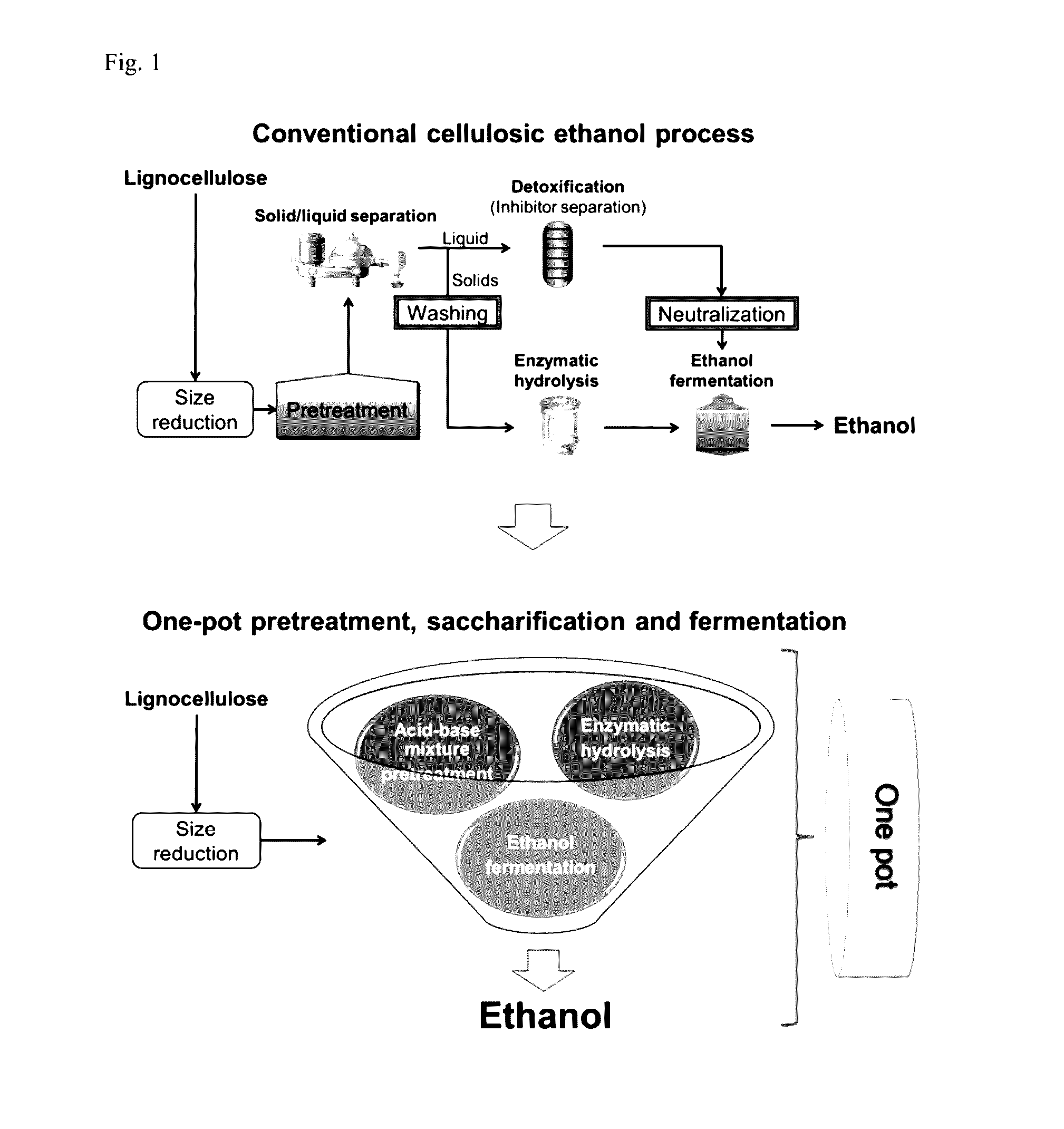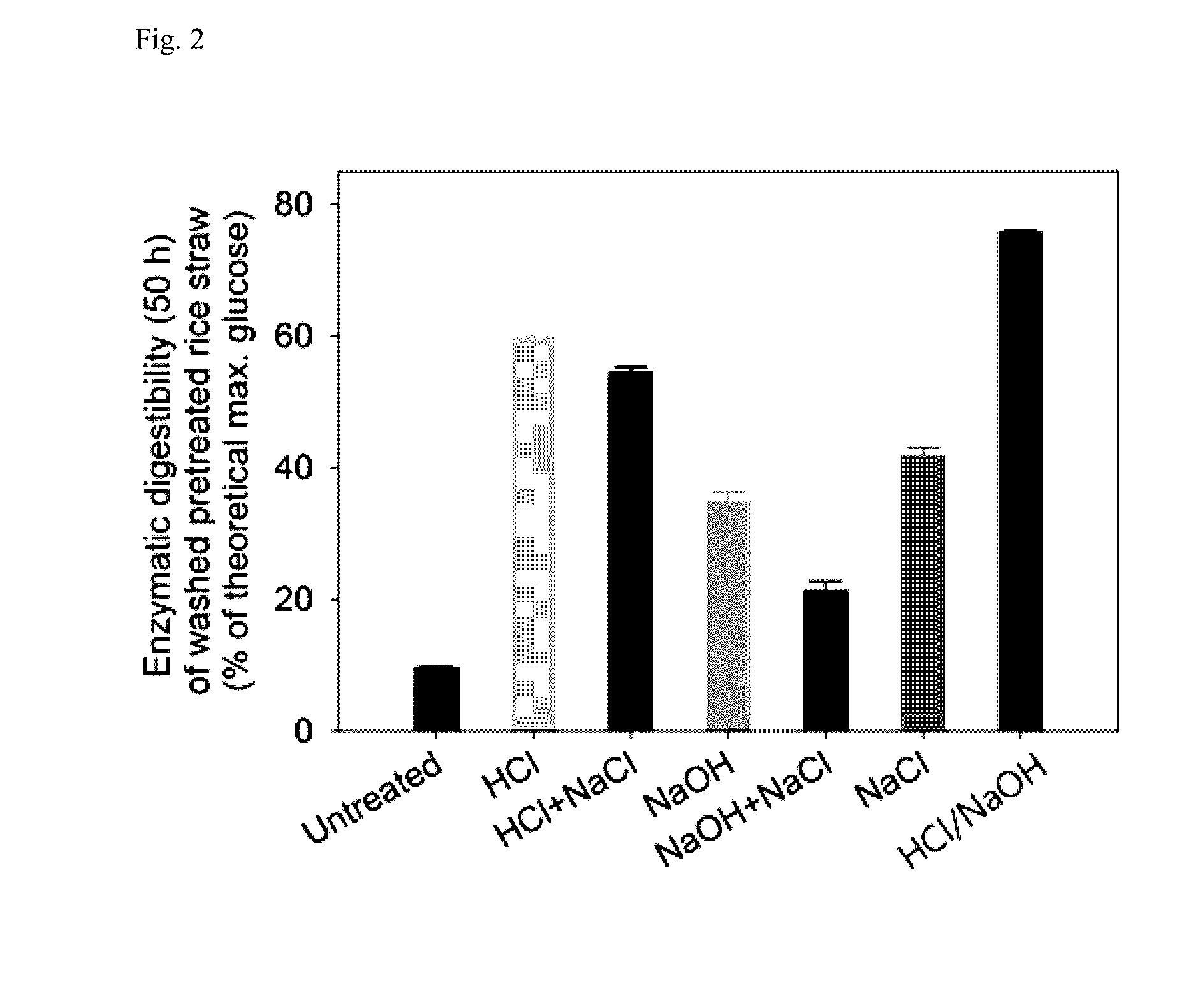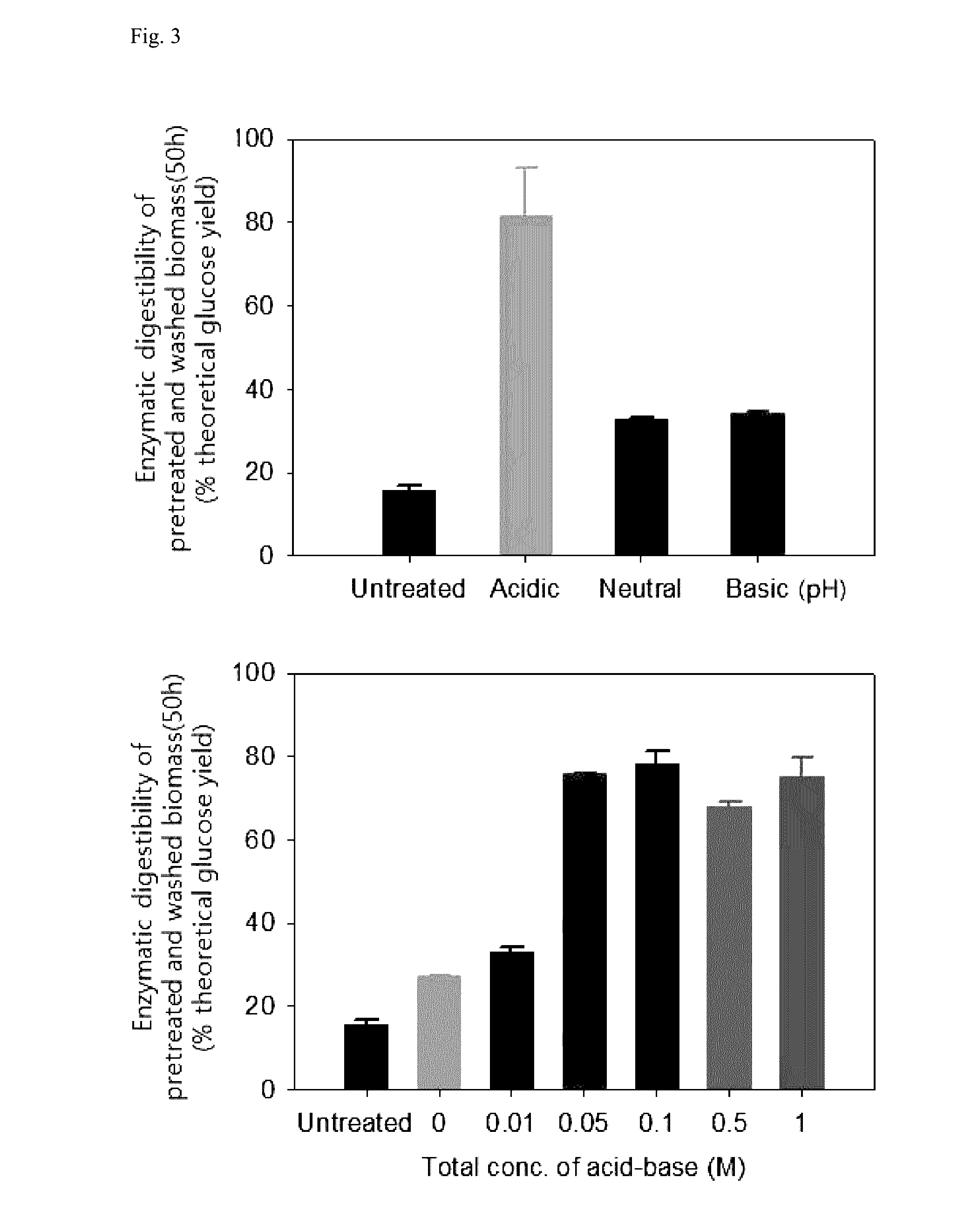Method for pretreating lignocellulose by using acid-base mixture catalyst
a technology of acid-base mixture and lignocellulose, which is applied in the direction of biofuels, fermentation, etc., can solve the problems of significant increase in total operating costs, affecting and affecting the production efficiency of ethanol, so as to improve the saccharification efficiency and simplify the overall process. , the effect of improving the production yield of ethanol
- Summary
- Abstract
- Description
- Claims
- Application Information
AI Technical Summary
Benefits of technology
Problems solved by technology
Method used
Image
Examples
example 1
Effects of Saccharification or Simultaneous Saccharification and Fermentation in Accordance with Pretreatment of Rice Straw
[0058]Rice straw was used as a representative example of lignocellulose, and glucose and the production of ethanol through a fermentation process were confirmed as representative examples of products.
[0059]First, in order to confirm effects of pretreatment with an acid-base mixture catalyst, a mixture catalyst mixed based on types of an acid and a base was prepared, wherein a mixing ratio (a pH condition) and concentration of the mixture catalyst were optimized, and in order to confirm reaction mechanisms of the acid-base mixture catalyst and a difference with only an existing acid or base catalyst, biomass composition and enzymatic digestibility were compared. In addition, enzymatic accessibility of biomass treated with the acid-base mixture catalyst was confirmed. Finally, saccharification and fermentation were performed in a reactor including a whole slurry w...
example 2
Investigation of Enzymatic Digestibility in Accordance with Pretreatment of Oil Palm Frond
[0077]An oil palm frond was used as lignocellulose and was pretreated with an acid-base mixture catalyst, and then a saccharification yield was measured through enzymatic hydrolysis.
[0078]In order to confirm effects of pretreatment with an acid-base mixture catalyst, a mixture catalyst mixed based on types of an acid and a base was prepared, wherein a mixing ratio (a pH condition) and concentration of the mixture catalyst were optimized, and enzymatic digestibility was compared. Conditions of pretreatment and a method for performing enzymatic hydrolysis are the same as in Example 1.
[0079]An oil palm frond was harvested, washed, dried, and then cut into a range of 90 to 1000 μm using a high speed rotary cutter (MF 10 commercially available from IKA, Staufen, Germany).
[0080]FIG. 12 shows an obtained result of pretreatment effect of oil palm frond under acidic, neutral, and basic conditions after ...
example 3
Investigation of Saccharification Yield in Accordance with Pretreatment of Sugarcane Bagasse
[0082]Sugarcane bagasse was used as lignocellulose, was pretreated with an acid-base mixture catalyst, and then a saccharification yield was measured through enzymatic hydrolysis.
[0083]In the case of sugarcane bagasse, sugarcane was harvested, washed, dried, and then was cut into a range of 90 to 1000 μm using a high speed rotary cutter (MF 10 commercially available from IKA, Staufen, Germany).
[0084]In order to confirm effects of pretreatment with an acid-base mixture catalyst, a mixing molar ratio (12 to 2:1=acidic; 1:1=neutral; 1:2 to 4: basic condition) and concentrations of an acid and a base were optimized, and enzymatic digestibility was compared. Conditions of pretreatment and a method for performing enzymatic hydrolysis are the same as in Example 1.
[0085]FIG. 14 shows enzymatic digestibility of pretreated and washed sugarcane bagasse based on a total dry weight of untreated input biom...
PUM
| Property | Measurement | Unit |
|---|---|---|
| temperature | aaaaa | aaaaa |
| pH | aaaaa | aaaaa |
| temperatures | aaaaa | aaaaa |
Abstract
Description
Claims
Application Information
 Login to View More
Login to View More - R&D
- Intellectual Property
- Life Sciences
- Materials
- Tech Scout
- Unparalleled Data Quality
- Higher Quality Content
- 60% Fewer Hallucinations
Browse by: Latest US Patents, China's latest patents, Technical Efficacy Thesaurus, Application Domain, Technology Topic, Popular Technical Reports.
© 2025 PatSnap. All rights reserved.Legal|Privacy policy|Modern Slavery Act Transparency Statement|Sitemap|About US| Contact US: help@patsnap.com



